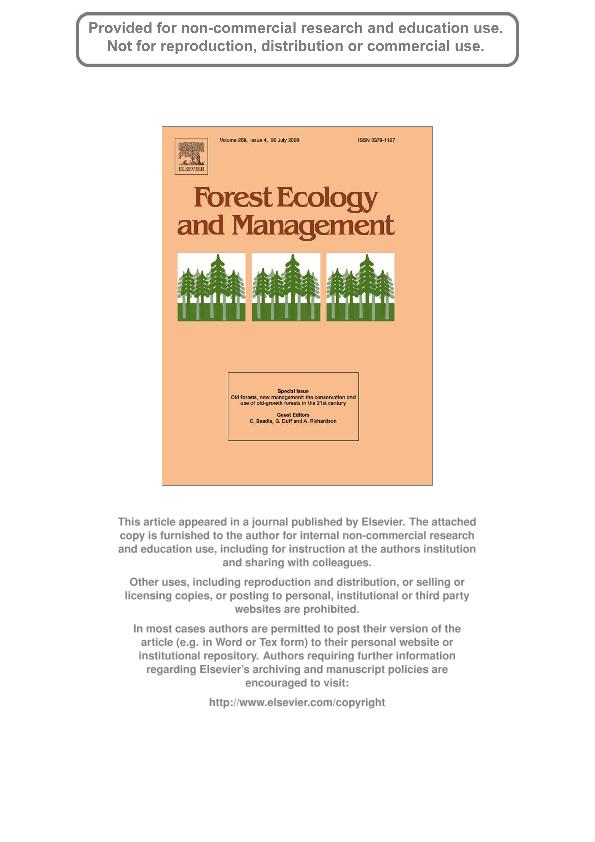Artículo
Alternative silvicultural practices with variable retention improve bird conservation in managed South Patagonian forests
Lencinas, María Vanessa ; Martínez Pastur, Guillermo José
; Martínez Pastur, Guillermo José ; Gallo, Emilce Andrea; Cellini, Juan Manuel
; Gallo, Emilce Andrea; Cellini, Juan Manuel
 ; Martínez Pastur, Guillermo José
; Martínez Pastur, Guillermo José ; Gallo, Emilce Andrea; Cellini, Juan Manuel
; Gallo, Emilce Andrea; Cellini, Juan Manuel
Fecha de publicación:
01/2009
Editorial:
Elsevier Science
Revista:
Forest Ecology and Management
ISSN:
0378-1127
Idioma:
Inglés
Tipo de recurso:
Artículo publicado
Clasificación temática:
Resumen
Alternative silvicultural approaches to timber management, such as regeneration treatments with different degrees of stand retention, may mitigate negative effects of clear-cutting or shelterwood cuts in forested ecosystems, including changes in old-growth forest bird communities. The aims of this work were: (a) to compare bird species richness and densities among different silvicultural designs with variable retention (dispersed and/or aggregated) and unmanaged primary forests, and (b) to assess temporal changes at community and species levels before and after treatments. A baseline avian survey was conducted prior to harvesting to evaluate canopy gap presence and forest stand site quality influences. Subsequent to harvesting, data on bird species richness and density were collected by point-count sampling during the summer season for 5 consecutive years (4 treatments × 5 years × 6 sampling points × 5 counts). Bird species richness and density (15 species and 9.2 individuals ha-1) did not change significantly with forest site quality of the stands and canopy gap presence in unmanaged forests. However, both variables were significantly modified in managed forests, increasing over time to 18 species and reaching to 39 individuals ha-1. Inside the aggregated retention, bird communities were more similar to unmanaged primary forests than those observed within the dispersed retention or in clear-cuts. Opting for a regeneration method with dispersed and aggregated retention has great potential for managing birds in Nothofagus pumilio forests. This method retained enough vegetation structure in a stand to permit the establishment of early successional birds (at least in dispersed retention), and to maintain the bird species of old-growth forests which could persisted in the retention aggregates.
Archivos asociados
Licencia
Identificadores
Colecciones
Articulos(CADIC)
Articulos de CENTRO AUSTRAL DE INVESTIGACIONES CIENTIFICAS
Articulos de CENTRO AUSTRAL DE INVESTIGACIONES CIENTIFICAS
Citación
Lencinas, María Vanessa; Martínez Pastur, Guillermo José; Gallo, Emilce Andrea; Cellini, Juan Manuel; Alternative silvicultural practices with variable retention improve bird conservation in managed South Patagonian forests; Elsevier Science; Forest Ecology and Management; 258; 4; 1-2009; 472-480
Compartir
Altmétricas



